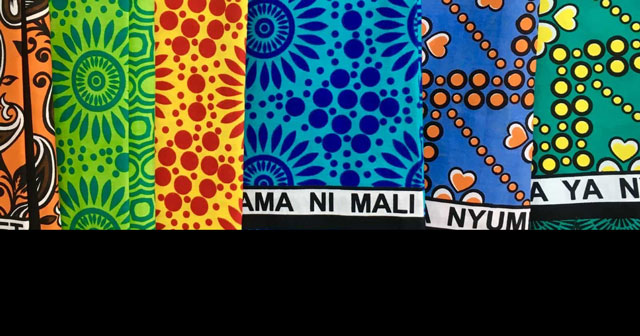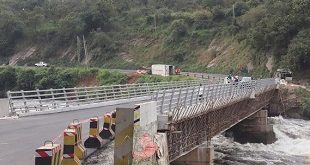
Kigali , Rwanda | THE INDEPENDENT | The East African Community-EAC is now pushing for traditional wear and garments made from local materials in a bit to revive the region’s textile industry.
A policy organ says if the lesu and kanga are encouraged as wear or inputs for clothes, it will go a long way in supporting cotton farmers, boosting industrialization, and saving foreign exchange.
For close to ten years now, the East African Community has sought to jointly revive and grow the local textile industry but efforts are yet to bear fruit.
The differences in opinion from individuals and influence from the West have ensured the move is not implemented.
Now the Sectoral Council on Trade, Industry, Finance and Investment (SCTIFI) called on EAC the Partner States to adopt the use of traditional or folklore wear as official Government dresses for official events, as part of the “Buy East Africa, Build East Africa” strategy.
The council, at its just-ended 38th Extraordinary meeting, also encouraged the countries to establish digital platforms to support the exchange of information on the harvesting of cotton and trade of cotton lint in order to increase the intra-EAC trade on the products.
The ministers also proposed that textile and textile articles be moved to the maximum band (of goods protected by high tariffs on imports) to stimulate local production.
In 2016, the EAC made a resolution to phase out the importation of used clothes and encourage local production, a move strongly opposed by the US recycling industry.
The US Department of Trade issued a threat to Uganda, Rwanda, and Burundi that they would be suspended from trading with the USA under the AGOA trade initiative if they implemented the ban on imports.
The countries backed down and in 2018, they agreed to use tariffs to limit imports.
The common tariff was agreed at 35 percent and a specific tax of 40 US Cents per kilogram, but Kenya, the biggest importer, imposed a specific tax of 20 cents per kilogram.
Last year, Uganda increased the tax on used cloth imports to 1.17 dollars (about 4,500 Shillings) per kilogram, while for used shoes it was raised from 1.37 the previous year to 1.41 dollars.
The sectoral council also called for the expansion of the tax policy harmonization for the cotton, Textile, and apparel sector, and modalities of developing leather industrial parks with common effluent treatment; among others.
The Chairperson of the meeting and Minister of Finance for Burundi, Audace Niyonzima, called on the Partner States to remove the restrictions and bottlenecks that impede industrial development in the region. He lamented about the establishment of clear policies and strategies but the failure to implement them.
Jean Baptiste Havugimana, Director of Productive Sectors, challenged the Partner States to adopt revolutionary and innovative approaches to implementing industrial policies if the anticipated economic growth in the regional policy was to be achieved.
He revealed that the industry value-added growth was slowing down again.
It is estimated that East Africa spends 200 million dollars in imports of used clothes, shoes, and bags, while Kenya, the major importer of second-hand clothes and imported approximately 185,000 tons of used clothing in 2019.
This has been at the expense of locally made products and local textile industries, which are unable to satisfy the market and meet the demand for ‘trendy’ clothes. This was why EAC had agreed in 2016 to a complete ban by 2019.
Reacting to the US threats, President Museveni, said, “The time had come for the region to begin discarding the importation of second-hand clothes. Uganda is spending over 880 million dollars annually on textiles coming from outside the region”.
Rwanda’s Paul Kagame insisted “Rwanda and other nations under AGOA have to do other things, we have to grow our economies and industries.”
However, Kenya disagreed with the ban deadline saying there was no capacity to meet the demand from the local market, and it later withdrew from the regional plan.
Ugandan importers say many of them have failed to clear their imports at Mombasa since the recent tariff hikes last year.
A recent report by Greenpeace Germany dubbed “Poisoned Gifts from donations to the dump-site: textiles waste disguised as second-hand clothes exported to East Africa” says used garments export to East Africa is a way of dumping by the West. “Despite the effort in investing in local textiles, the main problem that remains underestimated is the impact of overproduction and the textile waste being exported from the Global North to Africa,” the report says.
It adds that the higher the demand and production of garments in the West, the greater the problem for East Africa.
“The fast fashion business model relies on never-ending growth and the ever faster consumption of “disposable” fashion, which is currently reliant on the Global South becoming a regional dump-site for the growing mountains of discarded clothing”.
The report cites the overflowing landfills and wastes of clothing and footwear strewn across the landscape in poor countries.
The Sectoral Council meeting was attended by representatives from ministries responsible for Industrial Development; EAC Affairs; Foreign Affairs; Trade; Investment; Enterprises Development; Finance; Economic; Planning; Agriculture; Livestock; and Private Sector Organizations, Export Processing Zones; Revenue Authorities; Micro, Small and Medium Enterprises Authorities; Export Promotion Organization, Investment Authorities; Medicine Regulatory Agencies; Presidents Office among others.
*****
URN
 The Independent Uganda: You get the Truth we Pay the Price
The Independent Uganda: You get the Truth we Pay the Price


